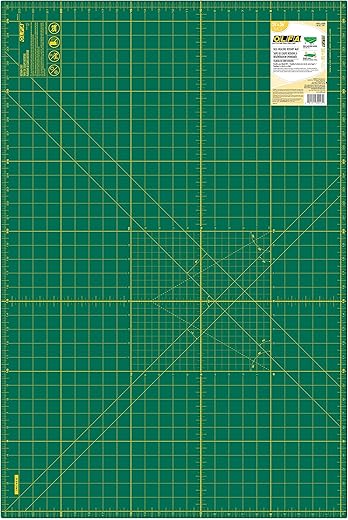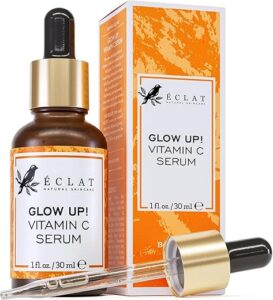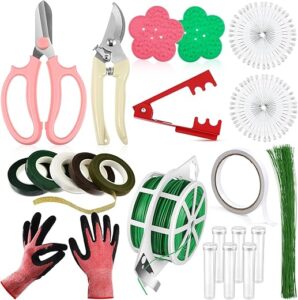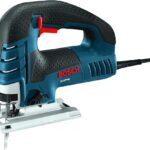Can a Mat Save Your Table—and Your Sanity? (Spoiler: Yes.)
I believe the right cutting mat can change your workshop. It gives you CLEAN LINES, fewer ruined projects, and yes — fewer trips to the band‑aid drawer. I’ve learned that a good mat is more than protection; it makes precise cutting feel almost effortless.
I love mats that stay FLAT, heal well, and have useful grids. Small tip: if you sew or use a rotary cutter, look for bias lines and clear angle guides — they speed up strip cutting and quilting. For tiny models or on‑the‑go crafts, a compact mat that’s stable beats a bigger one that keeps sliding.
Top Picks

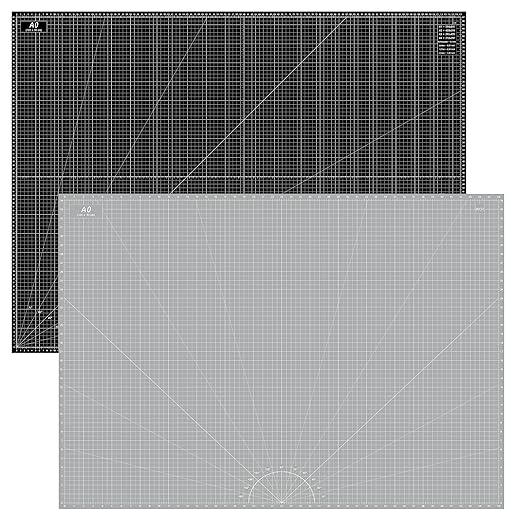
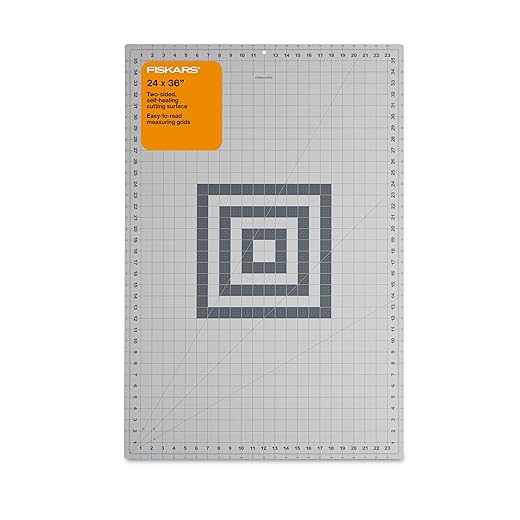
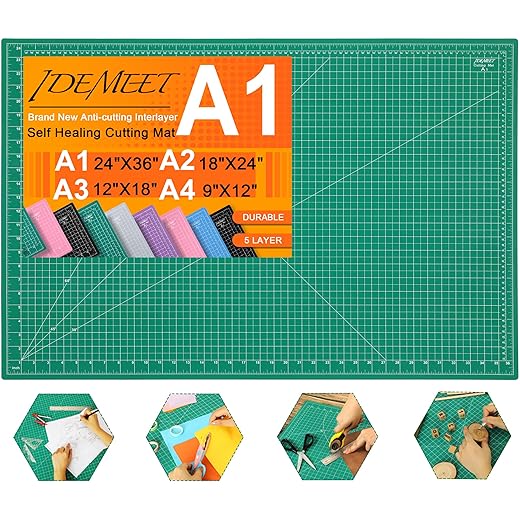
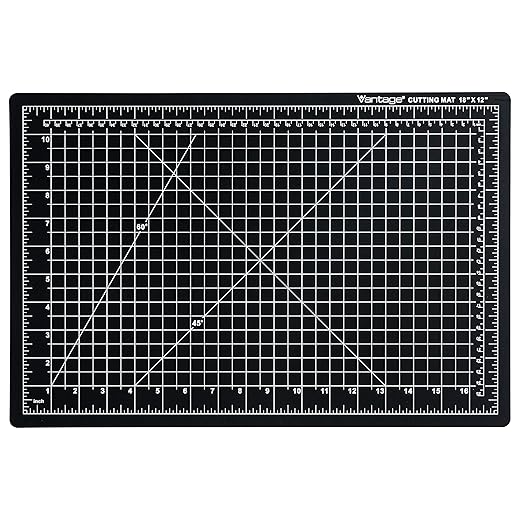


OLFA 24×36 Double-Sided Rotary Mat
This mat shines for rotary work — the printed grid and angle guides make bias and strip cutting straightforward. The triple-layer, self-healing construction protects blades and offers a reliably smooth surface for years of frequent use.
Precision and reliability I can count on
I reach for this OLFA mat when I need clean, accurate rotary cuts. The grid and angled markings are printed clearly and the mat's self-healing finish means I can vary cutting locations and the surface reseals. Over time that helps preserve the edges of my rotary blades and keeps the surface even.
What stands out and practical notes
A practical trick I use is to rotate the cutting location across the mat during long projects so wear is distributed and the healing performance stays optimal. If debris gets lodged, a soft art-gum eraser removes bits without damage — a tip I picked up from other users and it really works.
Ideal uses and downsides
This is my go-to for quilting, sewing, and any project where measured precision matters. It's less suited to heavy utility-knife work — if you cut with box cutters frequently choose a thicker, heavier-duty mat. Also, expect to pay for the brand — the quality justifies the cost for frequent users.
Headley Tools 36×48 Thickened A0 Cutting Mat
The extra-large A0 size and thicker 3 mm construction give a professional feel and strong protection for tabletops. It stays flat and handles heavy-duty hobby and craft work without showing quick wear.
A big mat for big projects
I like this Headley Tools A0 mat when I need a workspace that covers most of my table. The 36×48" size is liberating for large quilting sections, leather cutting, or multi-piece model assembly. The 3 mm thickness and 5-ply build make it feel substantial and protective under heavy work.
Standout construction and practical use
Because it’s so large, I dedicate a table space to it rather than moving it around. That’s perfect for ongoing projects but not ideal if you need a quick portable surface. I also appreciate the sturdy print quality on the grid and angle guides — they’ve helped when measuring leather patterns and mounting larger wallpaper samples.
Tips, limits, and who should buy it
If you’re a hobbyist who frequently works on oversized pieces, this mat is worth the investment. Expect to store it flat when possible. If you only do small craft tasks, the size (and price) may be overkill — in that case choose a smaller, more portable mat.
Fiskars 24×36 Quilting Cutting Mat
The large footprint and clear bias lines make layout and full-width cutting convenient, and the double-sided design extends usable life. It’s a solid, dependable mat that works well for both hobbyists and more serious sewers.
Why I recommend this for quilters
When I need to cut fabric straight from the bolt or square blocks without juggling smaller pieces, this larger Fiskars mat gives me the room to work cleanly. The printed bias lines are especially useful when I’m cutting across grain or making angled pieces for quilt blocks.
Features I use every session
I like that it stores conveniently (it’s flexible enough to stand or lay flat) but still feels stable under the rotary cutter. A simple routine — wiping it with mild soap and water — keeps it clean for fabric work.
Practical tips and limitations
If you get a new one and notice an odor, I recommend airing it out for a day or two before bringing it into a sewing room. Also be aware that the numbers may only read one direction; I sometimes turn the mat to keep measurements intuitive during long projects. Overall, it’s a dependable tool I trust for repeatable, accurate cuts.
Idemeet Density-Upgraded 24×36 Cutting Mat
I appreciate the extra density — it feels more stable under tools and heals reliably after cuts. The weight and thicker buffer layers make it a dependable work surface for frequent crafters.
Why I like this mat
I reached for this mat when I needed a large, durable cutting surface that actually feels like it will last. The upgraded density (the extra weight you can feel when you pick it up) translates into a more stable cutting platform and faster self-healing. For someone who cuts often, that reliability matters — I notice fewer deep grooves compared with cheaper thin mats.
Key features and how I use them
I use the printed grid side when I need precision (quilting or pattern cutting) and the less-busy side for trimming layers of vinyl or cardboard. The heavier weight also makes it less likely to slide while I’m cutting without a second hand to hold things down.
Practical tips, limitations, and projects
I find it ideal for model-making, sewing layouts, and as a protective bed under a laser engraver. If you plan to move your mat around a lot, be ready for the heft — that weight is both a plus (stays put) and a small inconvenience (not wallet-sized portable). For project ideas: use the busy side for tracing shapes and the clean side for batch rotary cutting; store flat when possible to keep it perfectly flat over time.
Dahle Vantage 12×18 Premium Self-Healing Mat
The five-layer construction and thicker profile give this mat a durable feel that holds up to repeated X‑Acto and rotary use. I find the black or clear options helpful when contrast matters for certain materials.
Sturdy, professional small-format mat
I use the Dahle Vantage when I want a small but upscale cutting surface for leather trims, precision model work, or detailed paper cutting. The thicker feel and five-layer design make it less likely to show deep grooves from X‑Acto knives, and the printed grid is clear and usable.
Features that matter in daily use
Because of the thickness and stiffness, I treat this mat as a stationary tool rather than something I move around daily. Users have reported excellent longevity — cuts may be visible but they rarely interfere with subsequent work. The black option is great when you need high contrast against light materials.
Tips and who should pick it
If you do a lot of small, detail-oriented cutting (leather, model parts, detailed stencils), this mat is a great investment. For very large pattern work, combine it with a larger mat; for small studios it’s perfect as a primary surface.
Fiskars 18×24 Self-Healing Craft Mat
It strikes a good balance between portability and usable surface area — ideal for many craft tables. The bold grid and lifetime warranty make it a dependable pick for frequent hobby work.
Why this size works for me
I use the 18×24 Fiskars mat when I need a balance of workspace and storage convenience. It gives me enough room for most bag panels, cardmaking, and small quilting sections while still being easy to store or slide under a shelf.
Built for everyday craft use
This mat does well for multi-use craft rooms where you want a single reliable surface for paper, fabric, and vinyl. Be mindful of heat — I avoid placing hot tools or leaving it in hot direct sunlight, which can affect the surface.
Practical tips
For small sewing projects or vinyl cutting, pair it with a 45mm rotary cutter and a clear ruler for quick, accurate strips. If you later need more room, it scales well as a secondary mat alongside a larger board.
Anezus 12×18 Budget Self-Healing Mat
This compact mat offers solid self-healing at a very attractive price, making it perfect for hobbyists and tabletop projects. It’s great for small assembly work, miniature painting, and craft table use without breaking the bank.
A no-frills mat that gets the job done
I keep an Aneuzs 12×18 on my secondary work table for quick jobs and small builds. It’s the sort of mat I don’t worry about when I’m switching tools or doing accidental heavier cuts — its price and build make it perfectly suited to frequent, low-stress use.
What to expect from the construction
I’ve used it for miniature painting, template cutting, and even as an alternative mouse pad in a pinch — the surface texture makes control surprisingly good for mouse movement. It’s not meant to replace a heavy-duty long-term mat, but for the price it’s a reliable companion for many hobby tasks.
Small tips and best uses
If you primarily cut large sheets of fabric, this mat will feel limiting; use it for cards, scrapbooking, small leather goods, and precision hobby cutting. Keep it flat between uses to prolong life, and if you notice embedded fibers, remove them with a soft brush or eraser to keep the surface smooth.
Final Thoughts
For most home crafters and quilters I reach for the OLFA 24×36 Double‑Sided Rotary Mat first. I recommend it because its printed grid and angle guides make bias and strip cutting fast and accurate, and the triple‑layer self‑healing surface protects blades while staying smooth through heavy rotary use. Choose this if you use a rotary cutter, make quilts, or need a reliable all‑round workhorse.
If you regularly work on large projects or want a pro‑level workstation, I pick the Headley Tools 36×48 Thickened A0 Cutting Mat as my second choice. Its extra‑large A0 footprint and 3 mm thickness give strong table protection and a stable surface for pattern‑making, oversized fabric cutting, posterboard, or leather projects. It’s less portable, but worth it if you need the space and durability.
Quick bonus: if you need something small and budget‑friendly for miniatures or test cuts, the Anezus 12×18 is a smart backup — but for consistent precision, OLFA and Headley are my top two recommendations.


